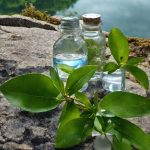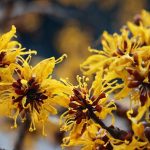A Silent War: Toenail Fungus vs. You
It’s a familiar story for many – a discolored toenail or an itch that simply refuses to retreat. These seemingly minor signs can sometimes evolve into a more formidable toenail fungus situation.
But take heart, there’s a community out there, battling the same. And there’s hope in a natural remedy that’s been under our noses (or in our kitchens) all along.
The Root of the Problem
First things first, understanding the enemy is half the battle won. Toenail fungus isn’t just about aesthetics; it’s a sign of a deeper underlying issue. Fungi thrive in dark, moist environments, making our shoes and socks the perfect hideout. Once they take hold, they can be stubborn to remove.
Allicin: Nature’s Unsung Hero

Allicin, an active compound found in garlic, has been a staple in natural medicine for years. But did you know it’s a formidable foe against toenail fungus? Its antifungal properties are not just old wives’ tales; there’s science to back it up.
When garlic is crushed or chopped, an enzyme called alliinase gets activated, producing allicin. This compound is nature’s way of defending the plant from pests. And lucky for us, it can also combat the fungi that cause toenail infections.
The Case for Natural Treatment
While there’s a plethora of over-the-counter treatments, they’re not without their downsides. These commercial treatments often come laden with chemicals that might lead to side effects or burn a hole in your pocket. In contrast, allicin offers an effective yet gentle solution without breaking the bank.
Getting Started with Allicin
Ready to wage war against that pesky toenail fungus? Here’s a step-by-step guide:
- Harness the Power: Start with a fresh garlic clove. Crush or chop it finely to activate the allicin. Let it sit for about 10 minutes to maximize the allicin yield.
- Application: Mix the crushed garlic with a small amount of olive or coconut oil to form a paste. This not only makes application easier but also boosts the remedy’s antifungal properties.
- Clean and Dry: Before applying, ensure your foot is clean and dry. Any moisture can make the fungus thrive.
- Apply the Paste: Generously slather the garlic paste onto the affected nail. Ensure you get it under the nail as well, as the fungus can hide there.
- Let It Work Its Magic: Ideally, leave the paste on for about 30 minutes. If you can stand the smell a bit longer, even better!
- Rinse and Dry: Wash off the paste and dry your foot thoroughly. Remember, moisture is the enemy.
- Consistency is Key: For best results, repeat this process daily until the fungus is gone. Depending on the severity, it might take a few weeks.
Beyond Garlic: Other Tips to Keep in Mind
Allicin is a powerful tool, but to ensure success, it’s essential to create an environment where fungi can’t thrive.
- Keep It Dry: After showers, baths, or any activity that gets your feet wet, dry them thoroughly. Consider investing in moisture-wicking socks.
- Let Them Breathe: Whenever possible, go barefoot or opt for open-toed shoes. Give those toes some fresh air!
- Maintain Good Foot Hygiene: This can’t be stressed enough. Regularly clean and trim your nails. And avoid using shared footwear.
A Word of Caution
As with any DIY remedy, it’s essential to listen to your body. If you notice any irritation or adverse reaction, discontinue use. And while allicin can be a formidable tool against toenail fungus, it might not work for everyone. For persistent or severe
Allicin Antifungal Properties
| Name of Compound | Short Description | Reference |
|---|---|---|
| Allicin | Antifungal activity but a very high MIC against pathogenic fungi | 1 |
| Allitridium | In vitro synergy with amphotericin B, one of the main i.v. antifungal agents | 2 |
| Allicin | Efficacy compared with fluconazole in alleviating systemic Candida albicans infections was evaluated both in vitro and in vivo | 3 |
| Allicin | Weak in vitro antifungal activity against fluconazole-resistant clinical isolates of C. albicans | 4 |
| Allicin | Inhibitory activity against bacteria and yeasts | 5 |
| Allicin | Antifungal efficacy against Cryptococcus neoformans by blocking the fungal cell membrane | 6 |
| Allicin | Antifungal activity against Aspergillus niger, Candida albicans, and Penicillium chrysogenum | 1 |
| Allicin | Antifungal activity against Candida albicans | 3 |
| Allicin | Synergistic effect with fluconazole against clinical isolates of fluconazole-resistant Candida albicans | 4 |
| Allicin | Antifungal activity against Saccharomyces cerevisiae | 2 |
References:
- 1. Antifungal activity of allicin against Aspergillus niger, Candida albicans, and Penicillium chrysogenum
- 2. In vitro antifungal activity of Allitridium, a compound from garlic, alone or in combination with amphotericin B
- 3. Allicin reduces the production of reactive oxygen species and induces apoptosis in Candida albicans
- 4. Synergistic effect of allicin and fluconazole against fluconazole-resistant Candida albicans
- 5. Inhibitory activity of allicin against bacteria and yeasts
- 6. Allicin inhibits Cryptococcus neoformans by blocking the fungal cell membrane





Leave a Reply